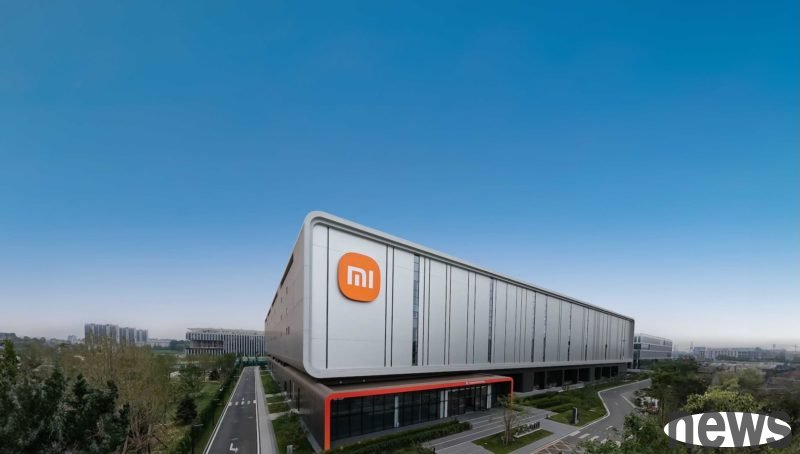The Chinese mobile phone brand Xiaomi has vigorously promoted its own chip strategy in recent years. After releasing its first self-developed SoC "XRING O1" (Xuanjie O1) using a 3-nanometer process, the latest news shows that Xiaomi has co...

The Chinese mobile phone brand Xiaomi has vigorously promoted its own chip strategy in recent years. After releasing its first self-developed SoC "XRING O1" (Xuanjie O1) using a 3-nanometer process, the latest news shows that Xiaomi has completed the trademark registration of the new generation of chip "XRING O2", which means that the development work is underway. However, with the strict restrictions on China's technological exports by the United States, there is still a high degree of uncertainty about whether Xiaomi's next-generation chips can enter advanced processing points as scheduled.
XRING series expansion layout, T1 chips have been applied to wearable devices
According to the file screenshot shared by @faridofanani96 on X, Xiaomi has registered chip trademarks such as "XRING O2", "XRING T1" and "XRING 0", and was found on the Chinese business inquiry platform "Tianyan Check". Among them, the XRING T1 has been applied to the Xiaomi Watch S4 smart watch, which means that the XRING series has been extended from the flagship mobile phone field to the wearable market.
Xiaomi Xring O2 pic.twitter.com/xvN3yNIMba
— Mochamad Farido Fanani (@faridofanani96) June 24, 2025
Although the specific specifications of XRING O2 have not been made public yet, the industry generally recommends that it will be a follow-up model of XRING O1, and is expected to further upgrade the process and integrate more AI computing modules.
The process upgrade direction is clear, Telco N3P or 2nm is the targetXRING O1 adopts the second generation of NTF 3nm process (N3B). According to industry trends, XRING O2 is most likely to be upgraded to the third generation of 3nm (N3P), or challenge the 2nm stage. Among them, N3P is the performance and yield upgrade version of N3B, which is compatible with the original design framework, and the upgrade cost is relatively controllable for Xiaomi.
If we further move to the 2nm process, we will enter the territory of the new TECHNOLOGY architecture. We not only need to use nanosheet transistor structures, but also rely on the EDA software and mask design tools from the United States.
US ban becomes the largest changeAlthough Xiaomi has not yet been included in the export control blacklist as in China and SMIC, the restrictions on high-level process technologies such as EDA tools and etching machines have made it generally difficult for Chinese companies to enter the 2nm stage. If the authorization cannot be obtained, Xiaomi may eventually be able to use the tyre-electric N3E process (performance and yield are better than N3B, but lags behind the N3P generation), losing its predecessor in the competition for high-level chips.
Apple and Qualcomm have already made 2nm, XRING O2 needs to speed up its paceIn contrast, Apple's A20 and A20 Pro, and Qualcomm Snapdragon 8 Elite Gen 3 have been released to use t-electric 2nm process. If Xiaomi XRING O2 is still at the 3nm stage, it may open the distance with the main competitive opponents in terms of AI energy efficiency, power control and multi-core performance.
However, analysts also pointed out that chip competition not only depends on the process stage, but also requires consideration of the integration of the overall system design and application. If XRING O2 can integrate business travel differentiation advantages in wearables, IoT, smartphones and data security, it still has a market opportunity.
Against the backdrop of the long-term technological war between China and the United States, self-developed chips have become the core strategy for Chinese brands to realize supply chain independence. In order to return to the mobile phone market through Kirin chips, Xiaomi has actively promoted the layout of the XRING series. In the future, whether XRING O2 can successfully enter mass production and build new products on flagships such as Xiaomi 15 or Watch S5 will become an indicator to observe its chip strength and international competition.
Whether Xiaomi can repel its dependence on Qualcomm and Joint Development in the global chip industry architecture and step out of its IP route, XRING O2 will be a key battle.
Xiaomi Has Already Filed The ‘XRING 02’ Trademark, Hinting That The Company Has Begun Development Work On The XRING 01’s Immediate Successor, But No Specification Details Are Available